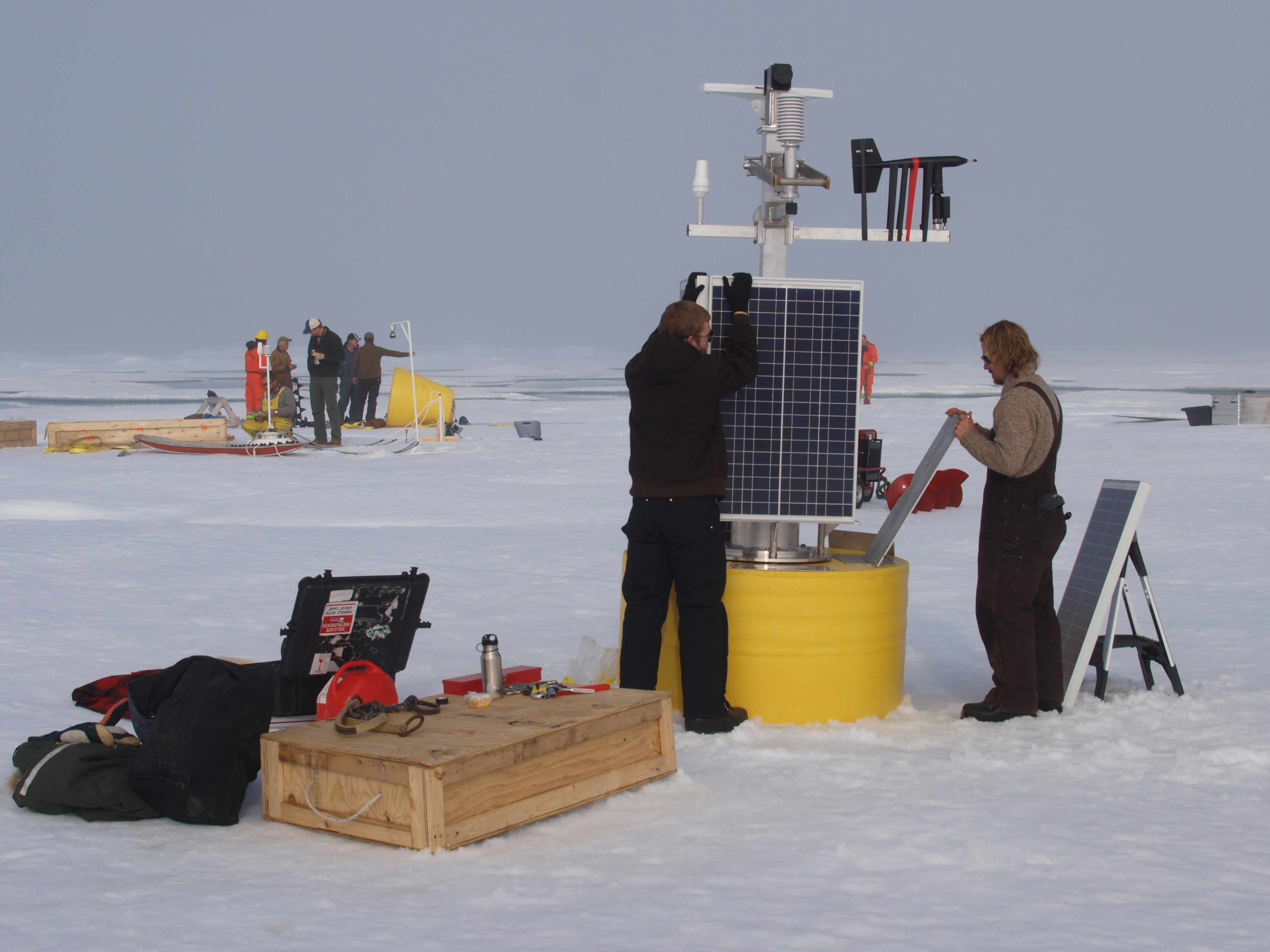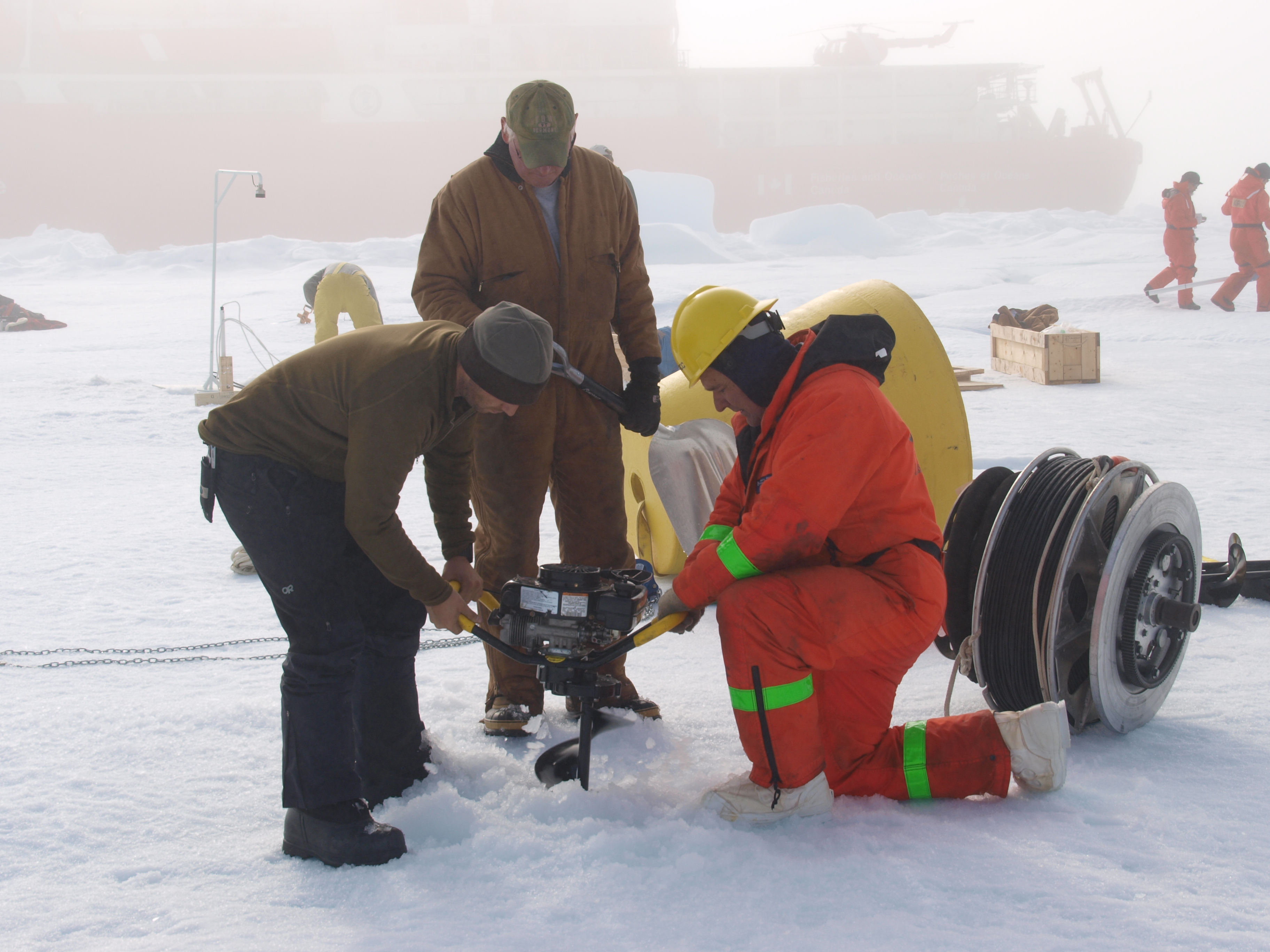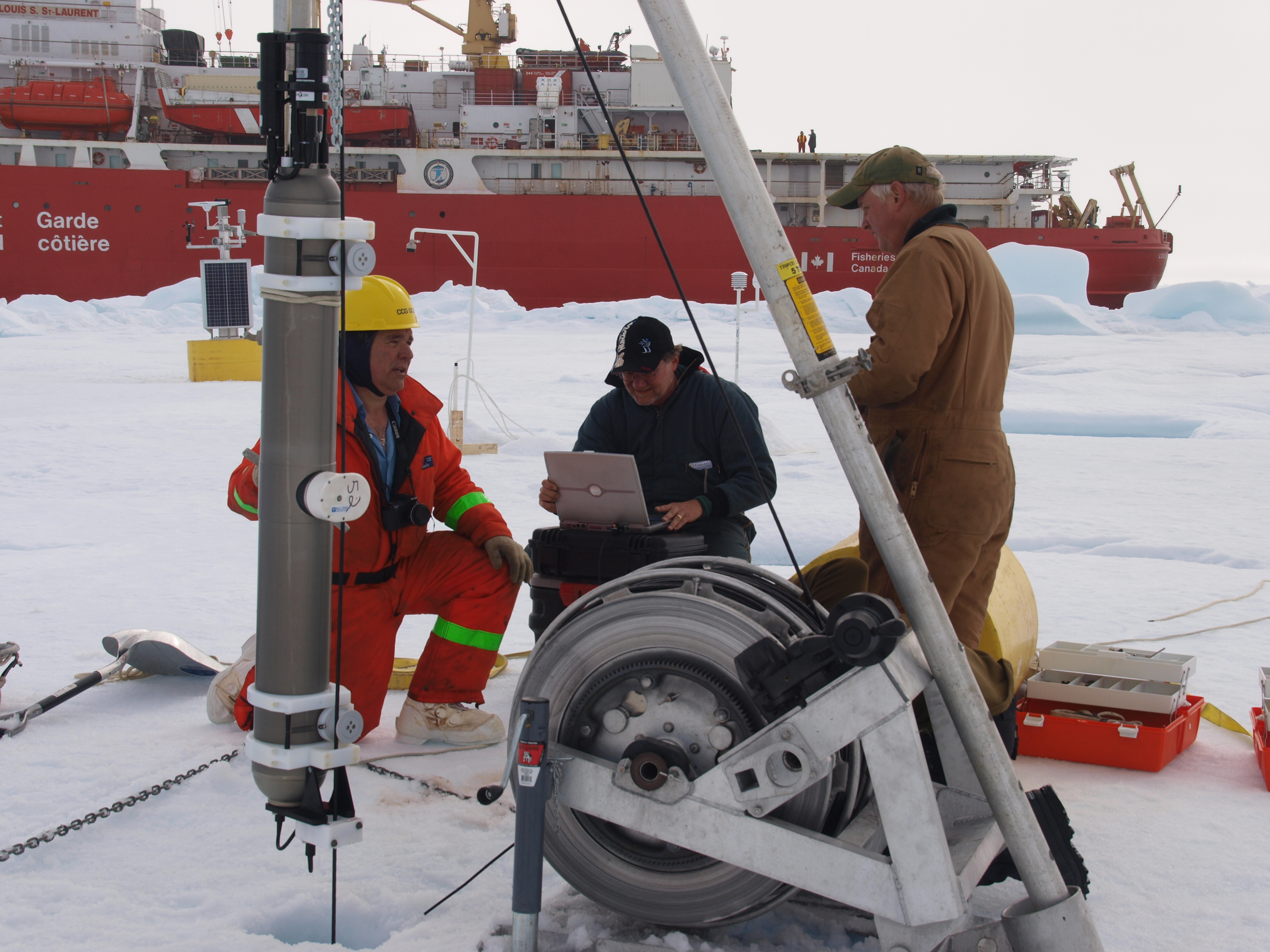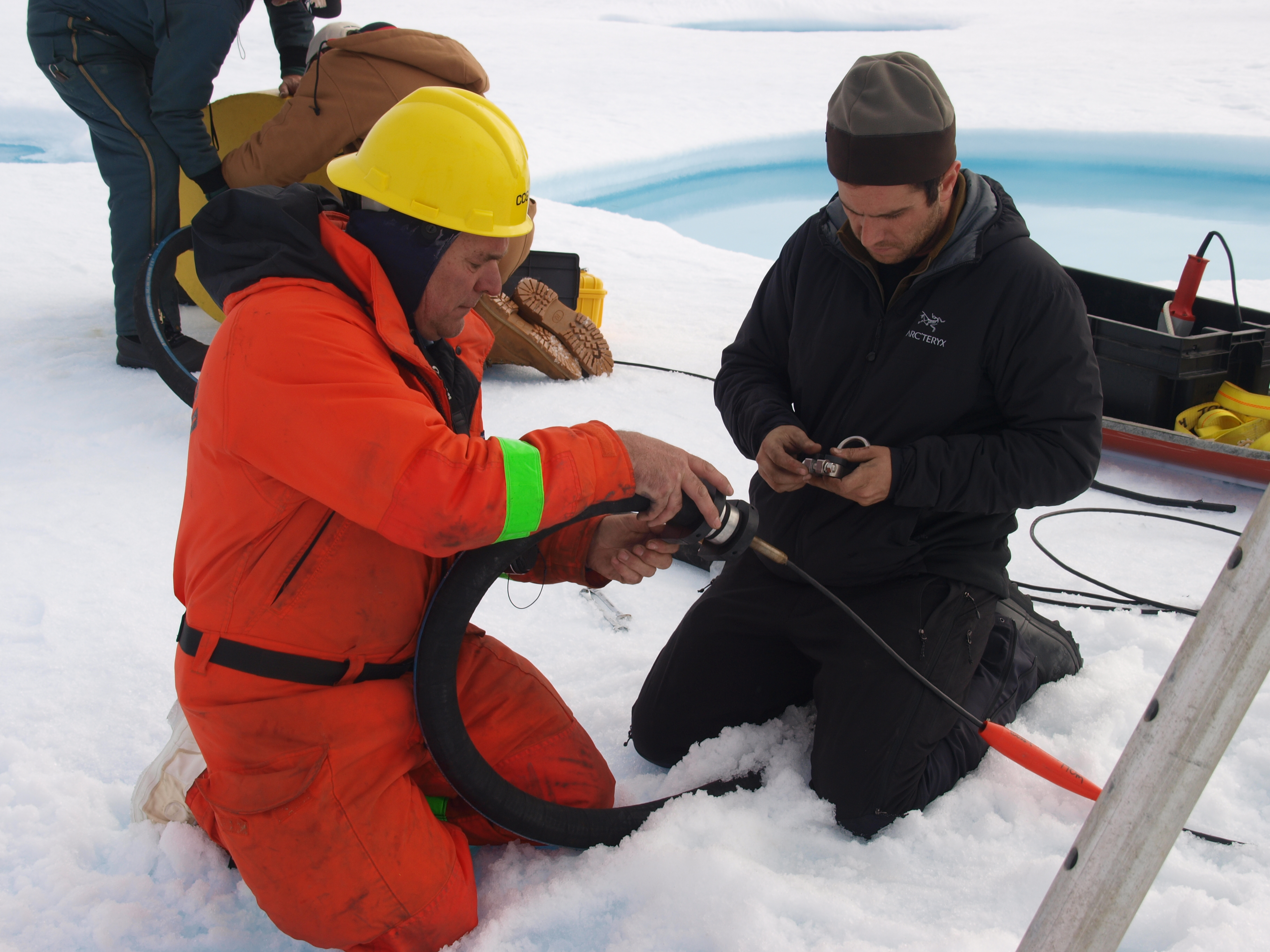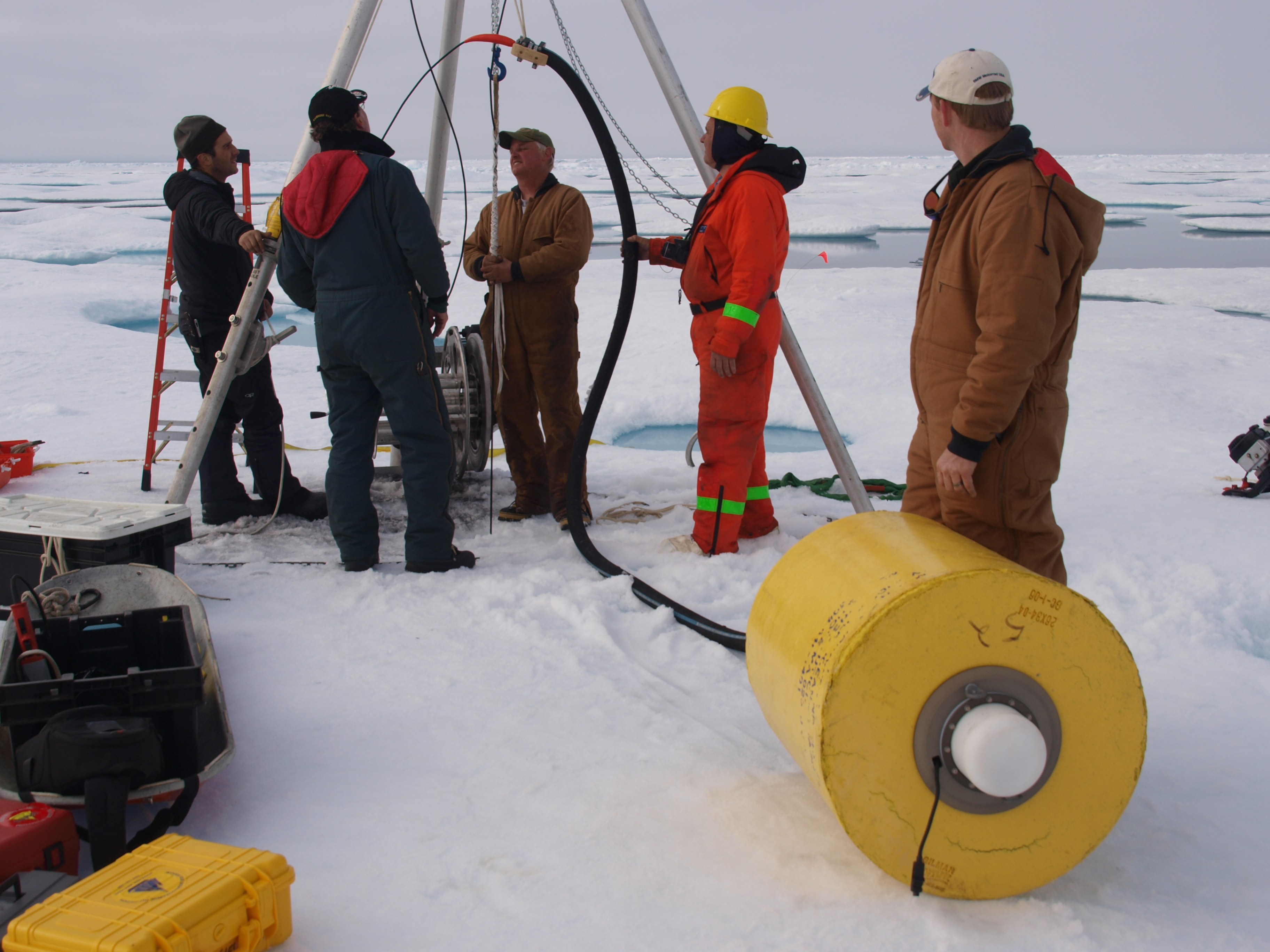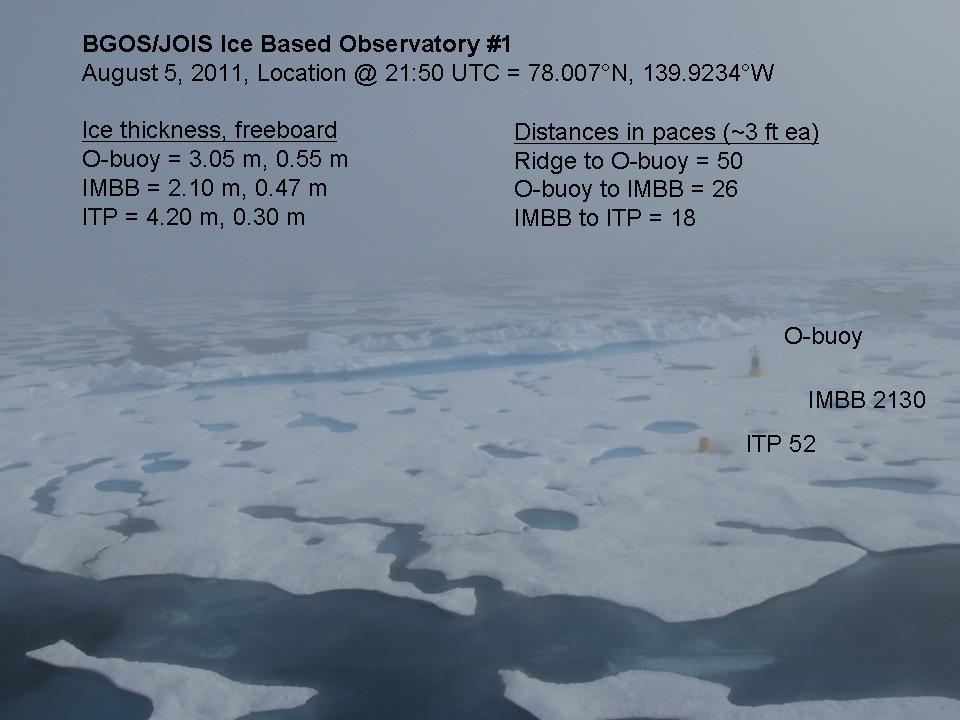ITP52 Deployment Operations
The second ITP deployed during the JOIS 2011 expedition was the first prototype ITP with biosuite sensor package deployed in the Arctic Ocean (another biosuite prototype, ITP 48, was deployed a month later during the ARK-XXVI/3 expedition on the Polarstern). In addition to the Sea-Bird Electronics CTD head with dissolved O2 measurement capability, the biosuite included a Satlantic Photosynthetically Active Radiation (PAR) sensor and a Wetlabs Triplet sensor for measuring turbidity, chlorophyll A, and colored dissolved organic matter (CDOM). This ITP would be deployed as part of an Ice-based Observatory (IBO) including an O-Buoy and IMB.
The ice conditions in the region were favorable and the weather reasonable, so only a 20 minute helicopter reconnaissance was necessary before a good sized floe with lighter blue melt ponds (indicating thicker ice) was located. Ice thicknesses measured between 1.8 and 3.2 m, and freeboards were between 25 and 45 cm, so the floe was selected for the deployment site. An hour and thirty minutes later, the deployment operations began after the CCGS Louis St. Laurent had maneuvered to the site.
Simultaneously, installations of an O-Buoy, IMB, and an Arctic Ocean Flux Buoy (AOFB) were conducted by different teams while other scientists surveyed the icefloe. The AOFB sensor was damaged, so that installation was aborted and that instrument was returned to the ship. Then ITP deployment was conducted. Five hours after the first deployment operations began, the ITP was installed and successfully tested. Shortly thereafter all scientists and gear were back onboard the icebreaker.
More information and photos on the deployment operations conducted during the IBO deployment are also available at: https://www.whoi.edu/page.do?pid=74276.
